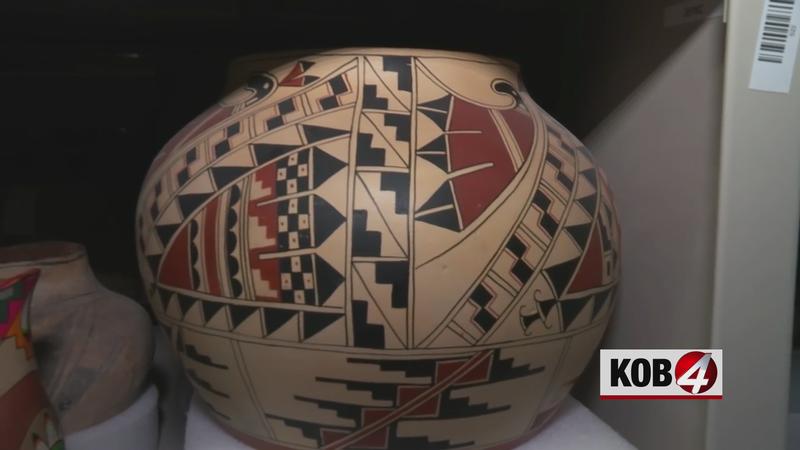4 Investigates: Law helping New Mexico tribes reclaim artifacts, remains
[anvplayer video=”5004506″ station=”998127″]
ALBUQUERQUE, N.M.- Buried beneath the Maxwell Museum of Anthropology at the University of New Mexico, there are clues about how people once lived.
Three million artifacts are stored in the basement.
"Anthropology is the study of what it means to be human, and it’s a very ambitious discipline," said Carla Sinopoli, director of the museum.
Sinopoli’s experience with archeology goes back four decades, and she says a lot has changed in that time.
"There was very little discussion about our ethical obligations to decedent communities, and how archaeologically was a science, and it was kind of separate from the communities whose past we are studying," she said.

For decades, Native American burial grounds were excavated, and human remains and artifacts were taken in the name of science.
"There are very few instances of Caucasian remains in museum collections. There are quite a significant collection of African American remains in museums, but it’s still dwarfed incredibly by this 200,000 individual people that have been held in museums for hundreds of years," said National NAGPRA program officer Melanie O’Brien.
Then came a new federal law.
"NAGPRA, Native American Graves Protection and Repatriation Act was passed in 1990," O’Brien said.
NAGPRA establishes that the human remains of America’s first people and their burial artifacts do not belong to science or to a museum. They belong to their tribes.
Museums and institutions have a moral and legal obligation to return them to their rightful owners.
"They are all required to repatriate Native American human remains and cultural items back to tribes that they belong to," O’Brien said.
The issue is personal to the Brian Vallo, governor of the Acoma Pueblo.
"We do this work because our ancestors should be at peace. There’s absolutely no rationale to be housing ancestral ancestors in any collection," Vallo said. "A pueblo like Acoma invests a tremendous amount of time and resources into these efforts."
Acoma has a team of cultural leaders dedicated to retrieving remains of ancestors and artifacts.
"There’s a value. There’s a monetary value for the non-Native and that’s very problematic and something I hope institutions, especially museums are rethinking," Vallo said.
O’Brien says museums are working on returning human remains, some more quickly than others.
"About 80,000 individual people have been repatriated to the tribes, but that leaves about 120,000 people still in museums, still in boxes and on shelves, not at rest, waiting to go home," O’Brien said.
O’Brien says nationwide, 30 years after NAGPRA became law, 60% of the ancestral human remains are still waiting to be returned and reburied.
New Mexico is doing better than the national average.
Out of 10,000 human remains identified by NAGPRA in New Mexico, 6,000 human remains have been returned. Three decades after the law took effect, 40% of the human remains are still sitting in museum collections.
Sinopoli estimates more than 1,000 artifacts have yet to be repatriated from the Maxwell Museum.
The Maxwell started the work on returning artifacts in 1991 by identifying, documenting and trying to reach out to Tribal groups.
Museum officials said repatriating the remains is time-consuming and costly work. It took them until 1999 to return their first human remains. By 2021, they’ve returned over 800 individuals to different tribes across the state, doing some of the work with NAGPRA grant money.
"Do I think 30 years is way too long? Yes, I do. I wish – I wish things would have moved more quickly. But, we are committed to moving forward as quickly as we can," Sinopoli said.
The Maxwell is not alone, New Mexico Highlands University and New Mexico State University all have human remains waiting to be returned according to the NAGPRA inventory.